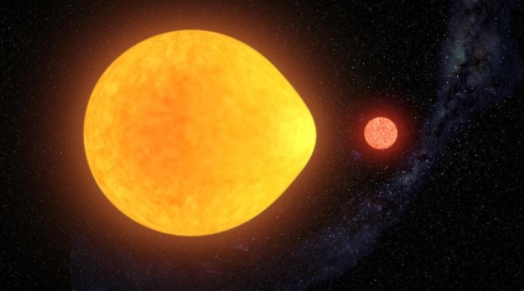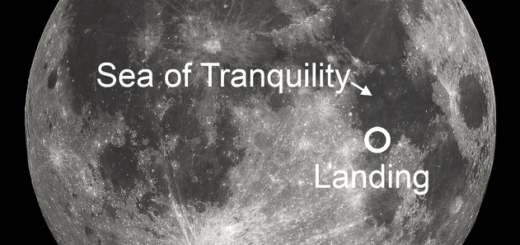Weird new star type pulses on only one side
Astronomers have finally found something they have spent decades searching for: a teardrop-shaped star that pulsates on only one side.
Citizen scientists helped the discovery team find the strangely lopsided star, which is known as HD74423, in data gathered by NASA’s Transiting Exoplanet Survey Satellite (TESS). The star is about 1.7 times the mass of Earth’s sun, and scientists determined that HD74423’s weird pulsing is caused by a second, smaller star.
“I’ve been looking for a star like this for nearly 40 years, and now we have finally found one,” study co-author Don Kurtz, an astronomer at the University of Central Lancashire in the U.K., said in a statement released by the University of Sydney, where Kurtz is temporarily based.
 An artist’s depiction of a pulsating star and a companion red dwarf. (Image credit: Gabriel Pérez Díaz (IAC))
An artist’s depiction of a pulsating star and a companion red dwarf. (Image credit: Gabriel Pérez Díaz (IAC))
Pulses are nothing new to astronomers; even our own sun’s surface fluctuates. But until now, every star’s pulses have been visible around the entire surface. That’s not the case for HD74423. That turns out to be because the star is a binary star, accompanied by a red dwarf star that is much smaller than our own sun. As the red dwarf whips around its larger companion every two days, its gravity pulls on HD74423. This tug distorts the surface of the larger star into a teardrop shape, also distorting the oscillations.
TESS was able to observe variations in the star’s brightness during this distortion. The data was posted on the crowdsourcing website Planet Hunters TESS, where citizen scientists noticed that something weird was happening. Often, fluctuations in a star’s light can be traced to a planet crossing across the face of that star — this is the entire premise of the TESS mission. Such fluctuations, however, may also stem from stellar activity, as in the case of HD74423.
Click here for more Space.com videos…
The scientists who picked up on the Planet Hunters’ interest found that the strength of the pulsation fluctuates in sync with the orbit of the binary.
“As the binary stars orbit each other, we see different parts of the pulsating star,” co-author David Jones at the Institute of Astrophysics in the Canary Islands said in the same statement. “Sometimes, we see the side that points towards the companion star, and sometimes we see the outer face.”



 Creators of mankind
Creators of mankind Description of “Tall white aliens”
Description of “Tall white aliens” Where they came from?
Where they came from? About hostile civilizations
About hostile civilizations The war for the Earth
The war for the Earth “Tall white aliens” about eternal life
“Tall white aliens” about eternal life Video: “Nordic aliens”
Video: “Nordic aliens” Aliens
Aliens Alien encounters
Alien encounters The aliens base
The aliens base UFO
UFO Technology UFO
Technology UFO Underground civilization
Underground civilization Ancient alien artifacts
Ancient alien artifacts Military and UFO
Military and UFO Mysteries and hypotheses
Mysteries and hypotheses Scientific facts
Scientific facts


















